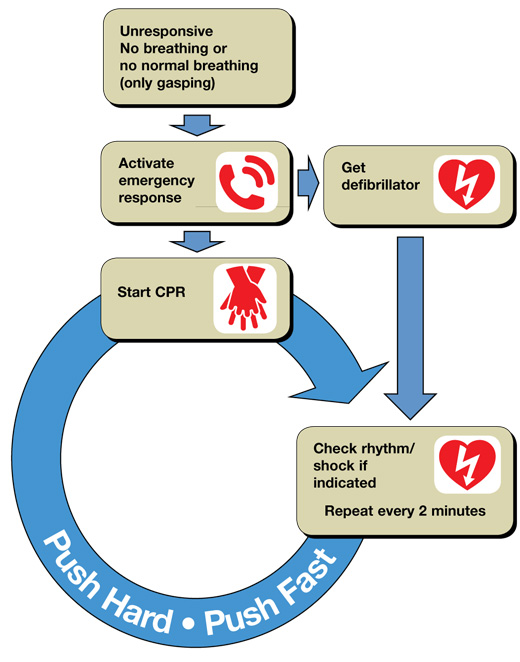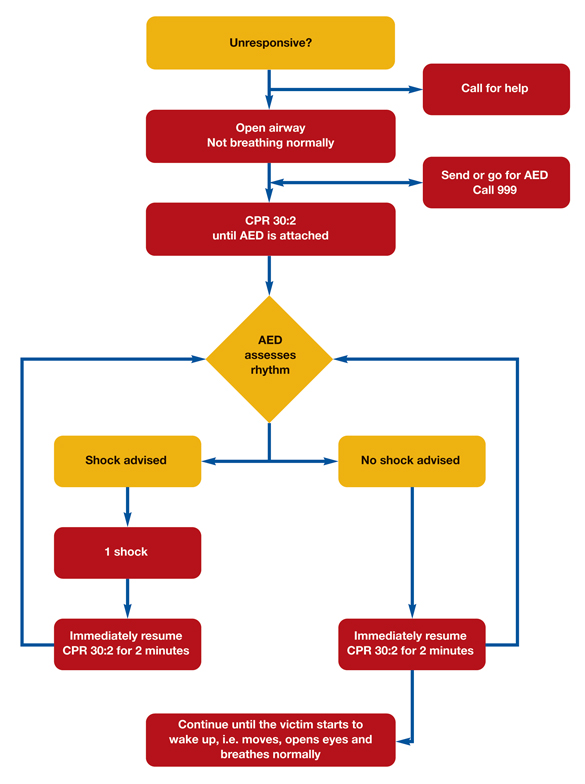Automated external defibrillators (AED)
High quality CPR will help keep the heart and other organs alive, but often, further treatment is needed to restart the heart and help it beat normally again. This is done with a controlled electric shock that stuns the electrical activity of the heart (defibrillation) and allows it to start beating normally again. (Defibrillation is not needed in every type of cardiac arrest).
The guidelines for this topic vary according to whether your territory falls under the American Heart Association (AHA) or the European Resuscitation Council (ERC). Please choose which guidelines you'd like to learn about.
Automated external defibrillators (AED)
This section is based on the American Heart Association guidelines

Resuscitation flowchart for AED use (courtesy of American Heart Association)
The AED is a complex computer that is capable of studying the heart and deciding if defibrillation is needed or not. There are many different makes, but is usually a small box attached to two sticky pads or electrodes that are placed on the chest.
They are designed for use by people who have never used one before and will talk to you as you are using it, telling you where to put the pads, how to do CPR and keep time for you.
Most modern models will recognise the need to defibrillate and advise you as such. They will then charge up and recommend that nobody touches the patient whilst it asks you to press a button that ultimately delivers the shock.

Automated external defibrillators (AED)
This section is based on the Resuscitation Council UK Guidelines

Resuscitation flowchart for AED use (courtesy of Resuscitation Council UK)
The AED is a complex computer that is capable of studying the heart and deciding if defibrillation is needed or not. There are many different makes, but is usually a small box attached to two sticky pads or electrodes that are placed on the chest.
They are designed for use by people who have never used one before and will talk to you as you are using it, telling you where to put the pads, how to do CPR and keep time for you.
Most modern models will recognise the need to defibrillate and advise you as such. They will then charge up and recommend that nobody touches the patient whilst it asks you to press a button that ultimately delivers the shock.